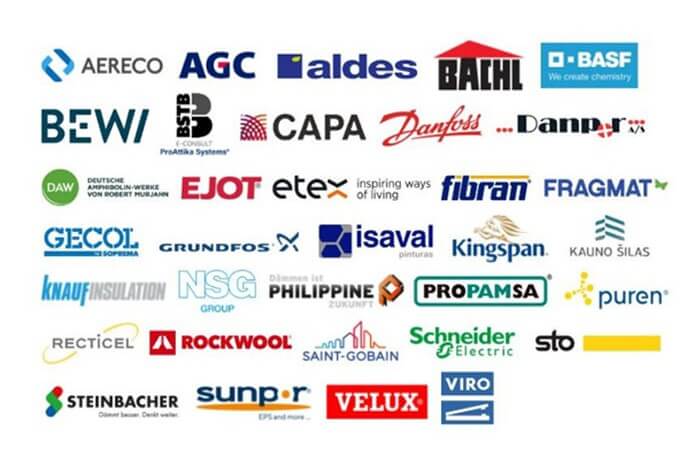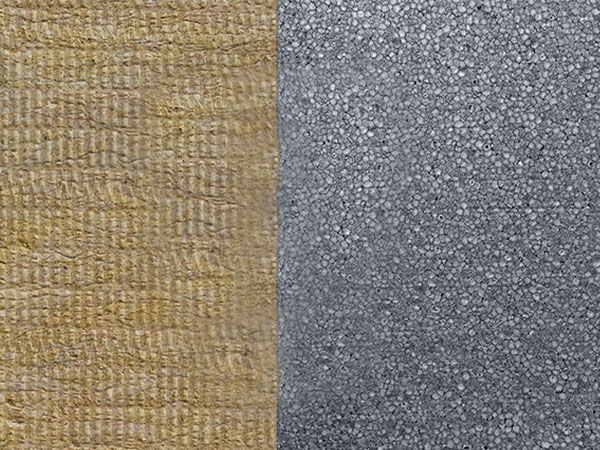
Act firmly on energy security – Walk the talk on energy efficiency
12/12/2022
Statement on the study “Environmental burdens of External Thermal Insulation Systems. Expanded Polystyrene vs. Mineral Wool: Case Study from Poland”
published in the MDPI at 2nd June 2020
Executive Summary
The purpose of this paper is to clarify to the readers of the paper “Environmental burdens of External Thermal Insulation Systems. Expanded Polystyrene vs. Mineral Wool: Case study from Poland” that the findings do not correspond to a scientifically sound and proven research and that it requires careful interpretation. With this paper, the main findings of the study that require further clarification or raise questions regarding the purpose and the validity of the study are given. The main elements could be summarized as:
- Unclear scope and purpose of the paper.
- Lack of detailed background data source for the products and the systems used in the study.
- Declared unit, with no (λ) lambda values nor R values.
- Misleading focus on weight.
- Influence of the glue or the base-coat not consistent between the two systems.
- No equivalence between the two systems regarding fire safety.
Main findings
xxxx insulation industry is committed to always provide transparent and consistent information regarding the environmental impact of our products respecting the official EN and ISO standards.
Over the past weeks, a small number of websites and social media have published articles referring to a study “Environmental burdens of External Thermals Insulation Systems. Expanded Polystyrene vs Mineral Wool: Case study from Poland”, comparing mineral wool ETICS with EPS ETICS systems and their respective environmental impact. These articles rely on incorrect interpretations of both facts and science to sustain conclusions that can only be understood as aiming to harm the reputation of mineral wool products in ETICS-applications.
In the construction sector, the European Standard EN 15804 Sustainability of construction works – Environmental product declarations – Core rules for the product category for construction products = and specifically section 5.3 Comparability of EPD for construction products) and the respective ISO standard 14025 Environmental labels and declarations – Type III environmental declarations – Principles and procedures (ISO14025: 2006, IDT) – specifically section 5.6 comparability – explicitly mentions the conditions that enable LCA studies for comparative use.
Proper technical knowledge on LCA assessment data and methodology is essential to make any study credible. Life Cycle Analysis used for comparative reasons must always be combined with in-depth knowledge of the technical properties of the products under study.
Regarding the statements on the Construction Product Regulation and Basic Work Requirements (BWR), specifically for ETICS, AVCPs are carried out for the whole system, and not for individual components. AVCP is about how consistent and constant a result for product would be, so if EN15804 is implemented for BWR7, a notified body or manufacturer would need to make sure the calculation for an ETICS system with exactly the same components do not end up with very different results. To show this, the exact same components of the ETICS system, with real production data from different periods (different years or months) must be used in order to show whether the result can be similar. However, this study does not provide near enough information to support such declarations and its sole focus is the comparison of ETICS systems with different materials. This type of comparison can be made already using the EPDs at ETICS system level.
For BWR7 and its implementation, the version of the EN15804 that is used in the study does not follow the updated version which EN15804+A2 that was published October 2019. In the updated version of the standard, the modules A1-A3, C and D are mandatory to be declared.
In addition to these principles, we also believe that important gaps exist that question the credibility of the results of the study:
- Lack of detailed background data source for the products and the systems used in the study.
It is not clear at which level the two ETICs systems are compared neither how the results in Tables 1 and 2 are declared.
- Scope and the purpose of the paper.
Considering the fact that the authors of the paper are manufacturers of both ETICs systems, the purpose of the study is unclear especially regarding the fact that comparisons are not made for two products of the same manufacturer but two competing manufacturers in Poland without declaring clearly, as already mentioned, in detail whether the information can even be comparable.
- Declared unit, with no (λ) lambda values nor R values and misleading focus on weight.
It is a common practice that thermal insulation products are always reporting a (λ) lambda and/or R value as part of their declared unit. In this study, no such reference is made in the declared unit.
- Influence of the glue or the base-coat not consistent between the two systems.
The analysis of the results is inconsistent and does not correspond to reality except for the EPS scenario of the study. In the case of the Mineral Wool referenced product, the system itself not only has bigger impact but even by only considering the impact coming from the Mineral Wool production and by excluding the rest of the system elements e.g. adhesive, etc. it is shown that mineral wool has bigger contribution even in comparison to the total ETICS system with EPS.
- No equivalence between the two systems regarding fire safety.
Products and systems are classified in accordance to the results that come out of the specific applicable test. Only the products listed by the EU are directly classified without testing as Classes A ‘No contribution to fire’. Mineral wool is one of them, as long as it does not contain more than 1% by weight or volume of homogeneously distributed organic material. In terms of fire performance, applying the designated tests it is not possible to say that an ETICS with MW and with EPS have similar performances.
Indeed, EPS can be flame retarded. Flame retarded EPS products boards for ETICS can reach an E class with the SBI test. In addition to the reaction to fire classification of the EPS boards, tests of complete façade insulation systems are performed in several EU countries for classifying the reaction to fire of the complete system.
The equivalent functional unit could be ETICS for medium size buildings that comply with fire safety requirement in term of risk of propagation of fire (EPS + MW fire bands ETICS are example of solution matching with those fire safety requirements).
Unsubstantiated comparisons with no equivalence in terms of ETICs performances damage the value of our product ranges. We suggest to make a transparent LCA background report available that would substantiate the findings and conclusions but also verifying it against EN15804 and ISO principles of comparison.
